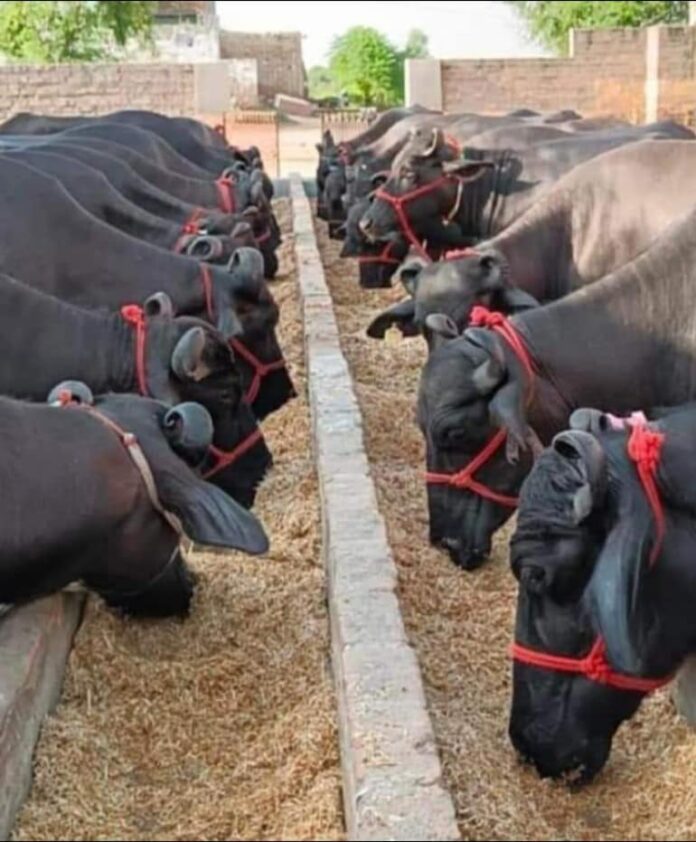Low Productivity of Indian Dairy Animals: Challenges & Mitigation Strategies
1*Simran Kaur and 2Amandeep Singh
1Ph.D. Scholar, Department of Animal Genetics and Breeding
2Assistant Professor, Department of Veterinary Anatomy
Lala Lajpat Rai University of Veterinary & Animal Sciences (LUVAS), Hisar-125004, Haryana
*Corresponding author: sudansimran321@gmail.com
Introduction
Millions of rural households in India depend on animal husbandry and dairy farming for their livelihood, particularly small and marginal farmers and landless agricultural labourers. With over 80 million farmers are directly engaged in dairy farming. As per BAHS 2022-23 report, the contribution of livestock to Agricultural and Allied Sector GVA was 30.47% and 4.75% to total GVA. Total milk production in the country was 230.58 Million tonnes. Out of 193.46 million cattle, number of Indigenous/Non-Descript and Exotic/Crossbred cattle were 142.11 million and 51.36 million, respectively. Government programs like Operation Flood (White Revolution) and the National Dairy Plan have helped promote dairy farming and boost milk output. Despite 58% surge in milk production from 2014-2023, average daily yield of indigenous/non-descript was 3.44 Kg/day against 8.55 Kg/day yield from exotic/crossbred cows. Cattle furnished 52% milk while buffalo and goat contributed 45% and 3%, respectively. Out of the total milk that was contributed by cattle, the share of crossbred cattle, indigenous cattle, non-descript cattle and exotic cattle was 30%, 11%, 10% and 2%, respectively. According to the Integrated Sample Survey, the average yearly production of cattle in India in 2019-20 was 1777 kg per animal per year, compared to the global average of 2699 kg per animal per year in 2019 (according to FAO statistics).
Importance of Indigenous breeds
Indigenous breeds can thrive and provide milk even in the face of limited feed and fodder supplies since they are well suited to our agroclimatic conditions and resistant to several tropical illnesses. A few of these breeds are widely recognized for producing large amounts of milk and fat. But over time, a lack of selection has led to a decline in these animals’ ability for production. Exotic breeds with high production rates lack the aforementioned traits and are exceedingly challenging to manage in the tropical conditions of India. Therefore, it is necessary to improvise Indian dairy animal breeds.
Causes of low productivity:
1. Low genetic potential
2. Limited access to high-quality feed and fodder, especially during dry seasons, has a negative impact on livestock health and milk production.
3. Indiscriminate breeding of animals
4. Unscientific management of animals. Farmers are cling to old and traditional practices of management
5. Less coverage in terms of disease control and monitoring through veterinary services and immunization campaigns.
6. Artificial insemination is a proven method for increasing milk output and productivity in bovines. Currently, AI coverage in the nation is restricted to 30% of breedable bovines, with the remaining 70% covered by scrub bulls of unknown genetic quality (Annual report, 2022-23).
7. Lack of proper record keeping
Initiatives taken by Indian Government:
1. Since December 2014, the Rashtriya Gokul Mission (RGM) has been undertaken to create and conserve indigenous bovine breeds. The objective was to enhance milk production and productivity of bovines, to propagate use of high genetic merit bulls and enhance AI coverage.
2. The NAIP (2019) is a campaign-mode genetic upgradation program that covers all bovine breeds in order to increase milk output by using low-cost breeding technologies to improve the genetic merit of milch animals using high-quality seed.
3. Record keeping through Information Network on Animal Productivity and Health (INAPH) Database to track tagged cattle and buffalo under AI.
4. Livestock Health & Disease Control Scheme: to strengthen the animal health sector by implementing preventative immunization programs against numerous diseases of livestock like rabies, anthrax, Classical swine fever, PPR.
5. National Animal Disease Control Programme (NADCP): to control (by 2025) and eradicate (2030) FMD and Brucellosis.
6. In 2024, the National Dairy Development Board has imported 40,000 doses of bull semen from Brazil to boost milk output among Indian local breeds.
Mitigation strategies:
1. Genetic enhancement through upgradation with the semen of elite bull.
2. Adopting superior breeding techniques like sex-sorted semen and embryo transfer technology and scientific management approaches can improve milk output.
3. Incentives and assistance should be given to the farmers so they may obtain superior breeds and advanced breeding techniques.
4. To guarantee that animals have access to wholesome feed all year round, promote better feed cultivation methods, silage production processes, and forage preservation strategies.
5. Make research and development investments in novel feed additives and drought-resistant fodder types.
6. Investing in veterinarian Services and Disease Control: To prevent the spread of illnesses and enhance animal health, strengthen veterinarian services, disease surveillance, and vaccination programs.
7. To stop disease outbreaks, create disease-free zones and put biosecurity measures in place.
Conclusion
It is critical to support India’s dairy industry in order to achieve food security and improve rural livelihoods. It is essential to train farming communities so they can become more knowledgeable and proficient in caring for dairy cows and producing high-quality milk. To address the issue of India’s low dairy cow output, it is also critical to expand infrastructure, veterinary care, and artificial insemination services.



